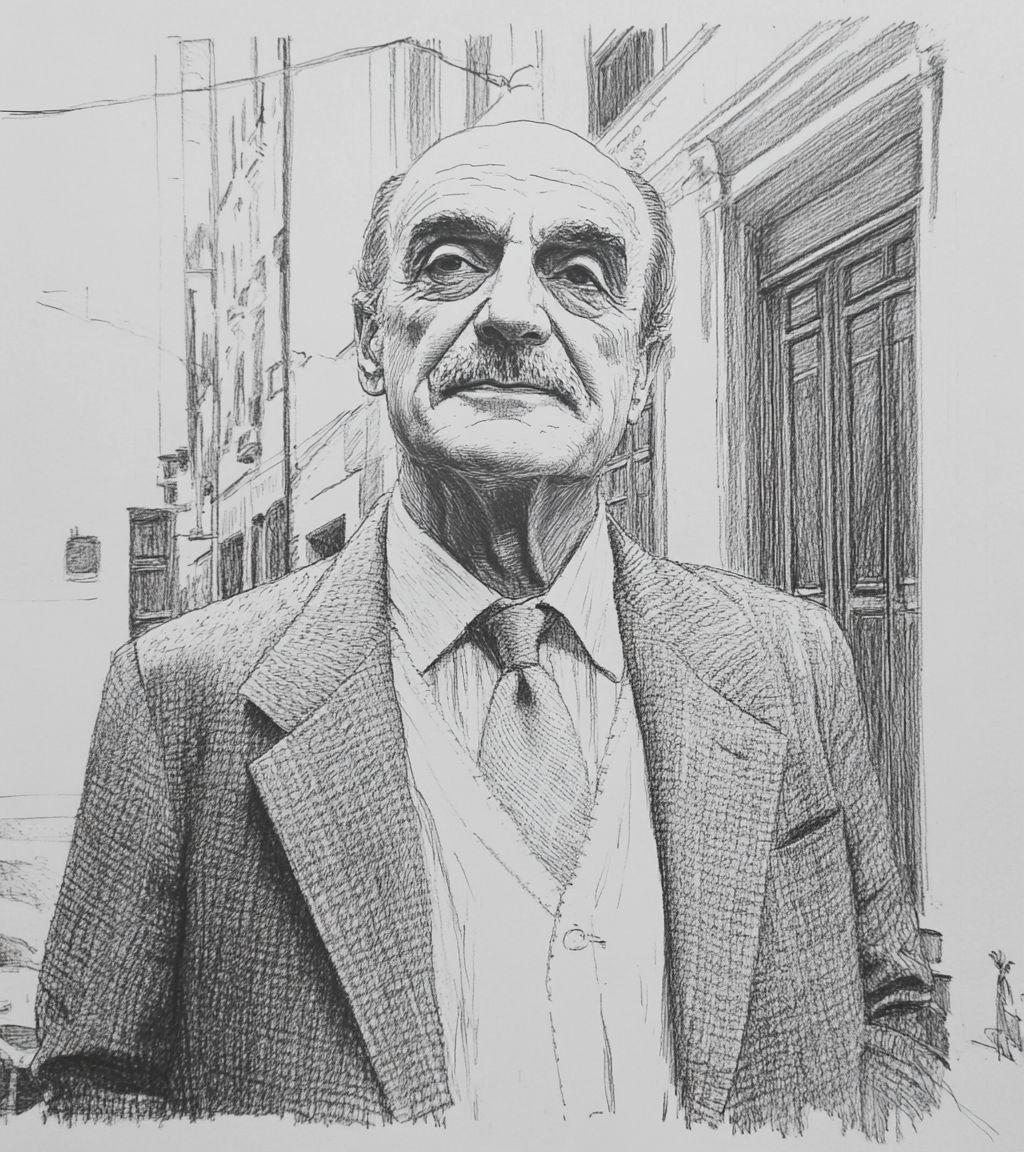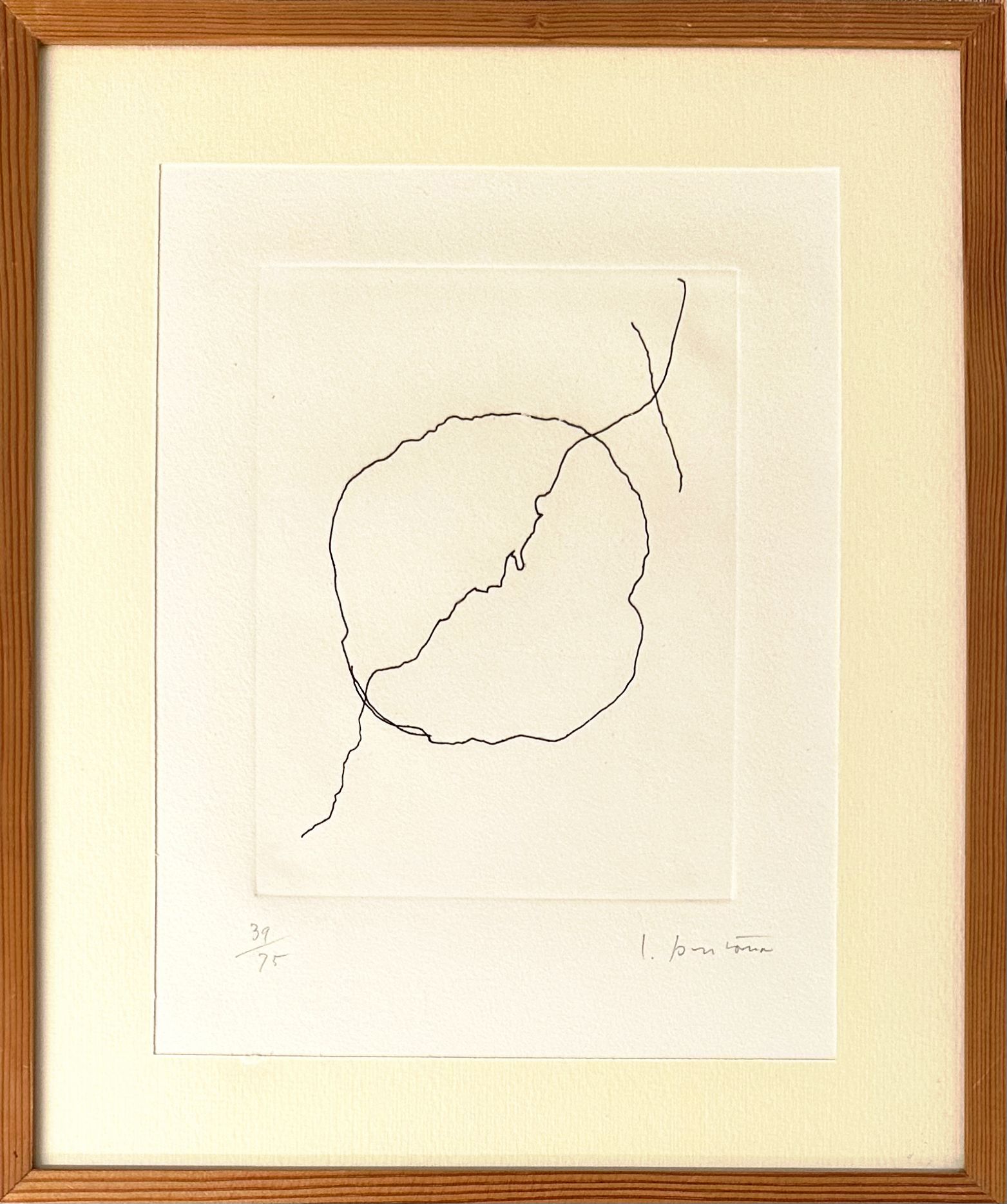
Lucio Fontana
Lucio Fontana spent much of his early life between Italy and Argentina, initially working as a sculptor in his father’s studio. In the 1920s, Fontana returned to Milan to study at the Accademia di Brera, where he became involved in the Italian avant-garde. Fontana founded the Spatialist movement (Movimento Spaziale) in Milan, which sought to merge art, space, time, and technology.
Fontana is best known for his radical approach to painting, particularly his iconic “Concetto Spaziale” (Spatial Concept) series, in which he slashed or punctured the canvas. These works challenged the traditional notion of the flat pictorial surface, introducing real space into painting. His interest in space and dimension was heavily influenced by developments in science, atomic theory, and technology in the postwar period. Fontana’s slashes (tagli) and holes (buchi) became a symbolic gesture — cutting through the illusion of art and opening it to new conceptual possibilities.
Notable works include Concetto Spaziale, Attese (series, 1958–1968), Concetto Spaziale, La Fine di Dio (1963–64), and numerous ceramic and neon installations. Fontana’s works have been exhibited in major institutions worldwide, including the Museum of Modern Art (New York), Tate Modern (London), and Centre Pompidou (Paris). He represented Italy at the Venice Biennale multiple times. Major retrospectives have been held at the Guggenheim Museum (New York), Fondazione Prada (Milan), and Musée d’Art Moderne de la Ville de Paris, affirming his status as a pioneer of spatial and conceptual art.
Collected by major institutions and notable private collectors:
— National Gallery of Art, Washington, D.C.— Tate
— Museo del Novecento Milano
— Centre Pompidou
Notable sales and auction records:
— Concetto spaziale, La fine di Dio, USD 29,1 million at Christie's, New York, 2015— Concetto spaziale, La fine di Dio, £15,9 million at Sotheby's, London, 2015
— Concetto spaziale, La fine di Dio, £16,2 million at Christie's, London, 2018
—
Artworks and Paintings
Biography and Artistic Career Highlights
Lucio Fontana was born on February 19, 1899, in Rosario, Argentina, into the family of an Italian sculptor and an Argentine actress. His childhood was spent between Argentina and Italy, where he was introduced early on to art and theater. At first, he assisted his father in the workshop, working with modeling and materials, which laid the foundation for his future artistic path.
1914 — moved with his family to Milan, where he continued his education and began studying architecture and art.
1920s — worked as a sculptor in Italy and Argentina, creating monumental and decorative works. During this period, his interest in space and form began to take shape.
1928 — entered the Brera Academy in Milan, where he refined his skills as a sculptor.
1930 — debuted at an exhibition in Milan, receiving his first recognition for his works.
1934 — joined the group «Abstract Artists» and began searching for new forms of artistic expression.
1935–1939 — actively exhibited in Milan, Paris, and Buenos Aires. His works from this period bore traits of abstraction and expressionism.
1940–1945 — continued to work in Argentina as a sculptor and teacher, participating in the artistic life of Buenos Aires.
1946 — published the «White Manifesto» (Manifiesto Blanco), in which he first articulated the ideas of Spatialism (Spazialismo): painting and sculpture should move beyond traditional forms and merge with science, technology, movement, and light.
1947 — returned to Milan and founded the Spatialist Movement (Movimento Spaziale).
1949 — created his first works with cuts and perforations on canvas (Concetti spaziali), which became his artistic signature. These gestures symbolized a breakthrough into a new dimension and the breaking of painting’s traditional boundaries.
1950s — developed the «Concetto spaziale» series, using metal, glass, neon, and light installations. His art became a synthesis of tradition and the avant-garde.
1958–1960 — produced the famous «Tagli» (slashes on canvas), which became iconic works of art.
1960s — achieved international recognition with exhibitions in New York, Paris, and London, and participated in the Venice Biennale and Documenta in Kassel. His works entered the collections of major museums.
1966 — a retrospective at the Museum of Modern Art in New York (MoMA) cemented his worldwide fame.
On September 7, 1968, Lucio Fontana died in Como, Italy. His legacy became one of the most important in the history of modern art: he broke down the traditional boundaries of painting and sculpture, offering a new artistic philosophy of space and gesture that influenced entire generations of artists in the second half of the 20th century.

